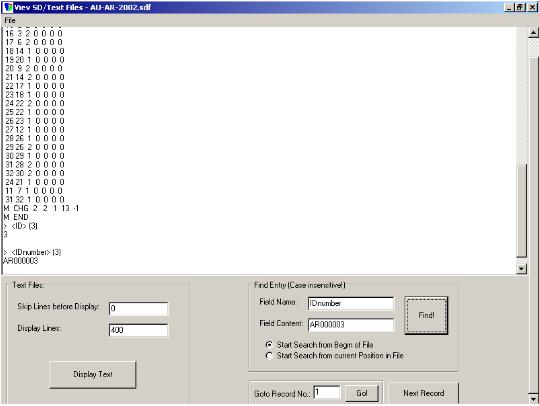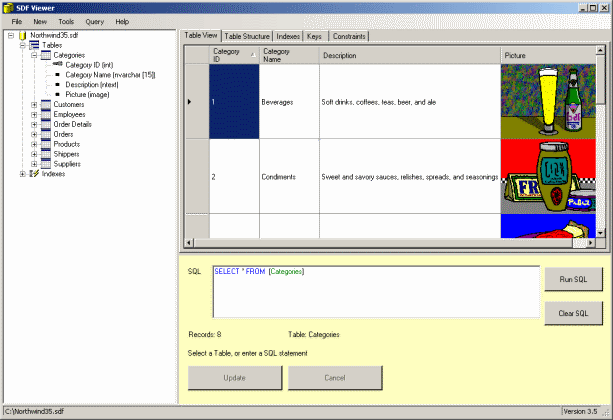An Open Source Software Package For Processing Standard Test Data Format (STDF) Files And Other ATE Data File Formats INTRODUCTION: RADAR is a set of scripts written in the R language that can process STDF files and generate summary files, statistics tables, histograms, XY plots, wafermaps and more. STDF is often used in data collection programs in the semiconductor industry. While there may be a bunch of companies out there to help read this format ( DSO, Galaxy, PDF Solutions, Salland Engineering, Soto Technologies, Syntricity, yieldWerx ), they of course are all commerical based and thus provide nothing without a little cash.
INTRODUCTION:
RADAR is a set of scripts written in the R language that can process STDF files and generate summary files, statistics tables, histograms, XY plots, wafermaps and more. The scripts will work on many different platforms (Windows, Linux, Unix, ...) since R is supported on many platforms. The scripts run quickly, since R is an efficient language. R is also very friendly for doing subsequent 'what about...' investigations of your data.
Example Outputs and Screen Captures:
To view some example histogram outputs, wafermap outputs, xy plots, and TkRadar screen captures click on the following link
RADAR Outputs And Screen Captures
DOWNLOAD:
To run the Radar package, you will need to have R installed. Fortunately, the R installation is a pretty painless experience. Visit the R home page to find the correct download for your system.
STEP 1: The link to the R home page, to download R...
http://www.r-project.org/ (RADAR verified with version 2.8.0, about 30MB download for Windows .exe install, and as recently as 2.15.3)
STEP 2: Download the Radar package as .zip or .tar.gz
STEP 3: Optional: To Access the 'to be included in the next release' updates
Go to the folder on Google Drive (link below) and copy the files into the radar package folder you now have from the 'STEP 2' installation. Some of these files will be new, others will overwrite/replace existing files.
OR, instead of Google Drive, the updated package can be found at Github...
To Access the older versions or to review the history of changes:
Developer's Page
Things that are of interest specifically to developers
A BRIEF HISTORY
0v0 -- Sep/06
Started. Evaluated different languages, by end of September, decided on 'R'.
0v1 -- Dec/06
Initially made available, limited distribution. ConvertStdf working with LTX/Cx and Catalyst STDF files (but not MPR records), PlotRtdf able to generate histograms and XY plots.
0v2 -- Jun/07
A more polished, complete and user friendly distribution: Added introduction slide deck, WaferMap script, ConvertParameters script, etc. ConvertStdf now works for 93K and Credence Quartet files, supports MPR records. PlotRtdf now generates .csv file of the statistics.
0v3 -- Aug/07
Added RCS version tracking to scripts, fixed some Credence test program dependent bugs, added a few more data sorting and screening scripts, created this web page
0v4 -- Oct/08
Just an accumulation of various features and bug fixes over the last year.
0v5 -- Nov/08
Added the TkRadar GUI. A big step in making it more user friendly.
0v6 -- Feb/09

Hide all the RADAR stuff in its own environments so your R workspace stays clean. (Also resolves some bugs with shared variables between functions) Added a few more scripts: ConvertEDL, ConvertJ9, SaveRtdf, LoadRtdf, ExpandMPRs. Added some per-user defaults that you can put in a .Rprofile file. Also a few bug fixes and minor feature tweaks: Now supports interleaved multisite stdf files as well as non-interleaved. ConvertStdf runs significantly faster for files that have >2K tests per device. See the release_notes_0v6.txt file for more detail.
0v6p4 -- Jan/10
0v6p5 -- Dec/10
0v6p6 -- Apr/12
0v6p7 - Dec/13
0v6p8 - Aug/14
The latest release. Primarily just bug fixes and tweaks to 0v6p7
Stdf File Viewer
THE 'TO DO' LIST
RADAR is by no means a finished project, but in its current form it is already quite functional, useful and may already meet all your requirements. On the list of things that may be tackled next are:
- Put it into a proper R package - This will require some syntax tweaks, a bit better documentation with examples, tidy up some of the spaghetti code into function calls...
- WaferMap - Add stacked wafer maps
- ConvertStdf - Make it more robust so that it handles mangled STDF files.(partially done)
- Pareto - Add a script that makes pareto plots from RTDF files
- StdfCheck - A checker that flags non-unique testnames, non-unique test numbers, any other sanity checks to make sure the test program is doing what you want in terms of datalogging. (ul > ll)
- Add some example Perl scripts for automating the retrieval of STDF files from FTP sites on a daily basis, decrypting them (GPG), converting them to RTDF, moving files to appropriate directories, updating a MySQL database and sending status emails. (ActivePerl when in Windows, regular Perl when in Linux/Unix/...)
- Add some tutorials on topics like guardband generation, reviewing 1000hr life test data, anova, etc...
- ConvertStdf - Do a re-write, trying to use the apply() function when processing records to see if we can better leverage the R language speed. This also allows the ability to then go multi-threaded/multi-core/multi-cpu for further speed increases using snowfall
- PlotRtdf - Add support beyond normal statistics, ie skewed normal/log normal, or separate upper and lower standard deviations to generate more realistic guard bands in cases where the data is not truly normal.
Questions, Reporting Bugs, Requesting Features, Code Submissions, Etc
So you want to reach someone...
Email to:
Enterprise Support, NDA's, Etc
Looking for a more traditional business relationship for your data analysis tools? Enterprise support is available. Use the above email address, and we'll forward your info/questions on.

Do you want an email notification when the next version is released?
Again, send an email to the address above asking to be notified, and you'll be added to the notification list when new releases become available. Conversely, send an email when you want to be removed from the mailing list.
Unrelated, but related:
Here are some Perl scripts for converting STDF to ATDF, and from ATDF to spreadsheet. The STDF to ATDF Perl script is from http://mrhackerott.org/semiconductor-informatics/informatics/ but has some modifications to enable running in linux and cygwin as well as some other tweaks.
Updated Fall/2011 to support Verigy 93K smar6.5.4 variant of the STDFv4-2007 standard.
Latest update was 23Jul2018 (FTR / MPR nibble order bug fixes)
Here is another Perl script. This one processes a GDSII layout file and generates a pad coordinates CSV file used for designing a probe card.
gdsii_to_csv_v3.pl (uploaded 15Aug2019)
Stdf To Atdf Converter
Some other open source STDF related web pages:
Free STDF Resources :: libstdf
A C library of functions for reading and writing STDF files.
PySTDF
A python module for parsing STDF files.
The Standard Test Data Format (STDF) and ASCII Test Data Format (ATDF) specifications are the original works of Teradyne Inc.
From Flyhoward: